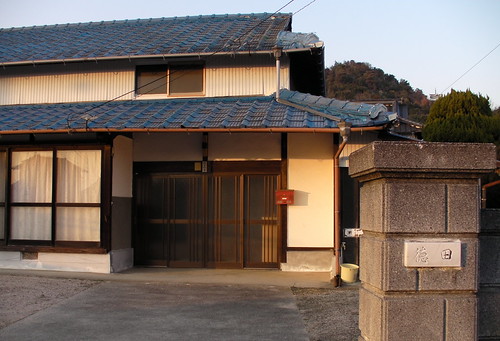Monday, June 25, 2012
Householder Name Plates
In the UK homeowners are unlike to put their name on their home. UK houses bear the street humber or more rarerly the name of the house. The Japanese generally and traditionally put at least the family name and more traditionally the full name of the oldest male of the household, on a name plate for all to see. In this photo there are two name plates. The one at roadside shows the family name in ideograms, the one above the door shows the name of the patriarch in full. Putting ones name on ones house seems to me to be comparatively ostentascious, and to demonstrate one aspect - and one of the few verbal aspects - of Japanese individualism.
Another example here.
Unlike UK name plates which name the house itself, these name plates are not naming the house but the householder. It is rare even for Japanese houses to have the plot number (banchi 番地) displayed on the house.
In the case of both house names, and floor signs, it seems that Japanese may be less inclined to add the name of something to that thing itself, but rather, as Bachnik predicts (?), the signs point off, to something that is not present.
取り下げご希望がありましたら、下記のコメントかnihonbunka.coのメールのリンクからご連絡ください。
Bachnik, J. M., & Quinn, C. J. (Eds.). (1994). Situated Meaning: Inside and Outside in Japanese Self, Society, and Language. Princeton University Press.
Another example here.
Unlike UK name plates which name the house itself, these name plates are not naming the house but the householder. It is rare even for Japanese houses to have the plot number (banchi 番地) displayed on the house.
In the case of both house names, and floor signs, it seems that Japanese may be less inclined to add the name of something to that thing itself, but rather, as Bachnik predicts (?), the signs point off, to something that is not present.
取り下げご希望がありましたら、下記のコメントかnihonbunka.coのメールのリンクからご連絡ください。
Bachnik, J. M., & Quinn, C. J. (Eds.). (1994). Situated Meaning: Inside and Outside in Japanese Self, Society, and Language. Princeton University Press.
Labels: collectivism, individualism, nihonbunka, 日本文化
This blog represents the opinions of the author, Timothy Takemoto, and not the opinions of his employer.

